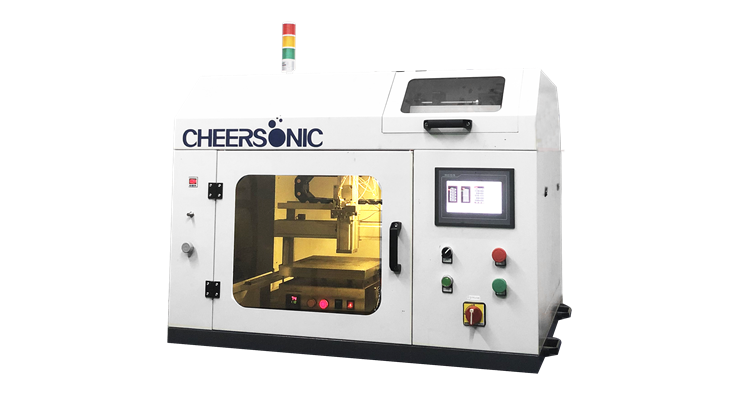Ultrasonic Coating Of DMFC Catalyst
The application of shell anodic catalysts in the DMFC
Different types of fuel cells will choose various and suitable catalysts according to the electrochemical reactions that occur to improve the conversion efficiency of the fuel cell.Fuel Cell Store has more than 100+ catalytic materials in its inventory (a partial list of them provided here) and has the know-how for fabricating various membrane electrode assemblies (MEAs) or catalyst coated membranes (CCMs). Membrane Electrode Assembly (MEA) is the most important component in fuel cell devices. Electrodes composing MEA greatly determine the performance and durability of its application in passive Direct Methanol Fuel Cell (DMFC).
Direct methanol fuel cell (DMFC) appears to be one of the most promising systems of various fuel cells, due to their simple structure, high energy density, easy transportation and environment friendly. The activity and stability of the anode and cathode catalysts determine the performance and stability of DMFC. Platinum (Pt) has the highest activity toward both anodic and cathodic reactions. However, the low abundance and high cost of commercial platinum catalyst hinder the widespread application of DMFC. Therefore, developing non-platinum catalysts is of great significance to the wide application of DMFC. Although researchers have made great progress in non-platinum catalysts research in recent years, the activity and stability of non-platinum catalysts still need further improvement to meet the requirements of commercial application.
Currently, PtRu alloys are the most appropriate catalysts for DMFC. For operational temperature of 60°C-80°C an alloy with atomic ratio of 1:1 was found to be most suitable for DMFC.Pt is responsible for MeOH and EG dehydrogenation, while Ru is responsible for H2O breakup, thus enabling the formation of CO2 at an acceptable potentials. Long term durability is questionable due to: anode catalyst poisoning by oxidation intermediates and loss of structure integrity, cathode catalyst poisoning by methanol crossover, surface oxide formation and loss of hydrophobic properties. Core shell catalysts have a potential to drastically reduce the Pt loadings currently needed in DMFC and DEGFC. Efforts to find a durable and cheaper (than Ru) core metal should be made.The results show that EG and methanol might require different surface compositions of Pt:Ru.

We usually use ultrasonic coating technology to create uniform distribution of platinum particles in membrane. It operates through continues vibration from the nozzle to break up the agglomerated particles into evenly dispersed functional particles, maximizing surface area exposure of the catalyst to create higher electrochemical performance of coatings.
Cheersonic has committed to the research and development of various ultrasonic equipment for more than ten years. CENG-S, CENG-M and CENG-L developed by our company is basic, programmable micro material spray coating system. Various types of catalysts suspensions including the carbon black ink, PTFE binder, ceramic slurry, platinum and other precious metal can be sprayed by using these equipment. Cheersonic ultrasonic dispersion syringe pump is 25 ml glass syringe standard, by controlling module delivers electrical impulses to generate ultrasonic vibrations inside of syringe body, and duration and intensity of ultrasonic vibrations is user controlled to completely disperse and hold particles evenly suspended in solution for up to several hours.
